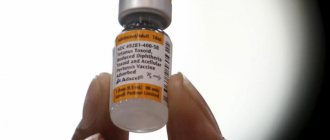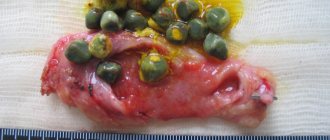White fever or in other words “squirrel” or “squirrel”, and in more scientific language “delirium delirium” or “alcoholic psychosis” is a state of delirium with sudden withdrawal of alcohol. Most often it occurs not during the period of intoxication itself, but 3-5 days after stopping alcohol consumption, against the background of withdrawal syndrome. At the psychopathic level, the disorder is accompanied by hallucinosis of various anamnesis, including tactile, visual and auditory hallucinations of a not very pleasant nature. From a somatic point of view, the patient may experience tremors of the limbs, fever and increased body temperature. It is worth noting that the disorder most often occurs in binge alcoholics with more than 5 years of experience.
Symptoms of the disease
The general symptoms of alcoholic delirium are characterized by a large number of vivid illusions and hallucinations in the patient, as well as problems with orientation in time and space. Hallucinosis, as noted above, is quite unpleasant and sometimes frightening visions: the patient may see devils, snakes, spiders, monsters and other creatures that do not exist in reality. Illusions are geometric or color changes in visible objects, such as fancy designs and patterns arising from ordinary objects.
Hallucinations are divided into visual, auditory and tactile, most of which are visual hallucinosis. The patient sees small unpleasant animals or reptiles, as well as devils or little green men. It is this fact that determines the common phrases: “drink yourself to hell” or “green snake.” Sometimes large animals may appear to the patient, but also not of the most friendly appearance and attitude: wolves, angry dogs, bears.
As for the symptoms of auditory hallucinosis, most often it is the hum of voices heard from all sides. The voices in most cases are addressed to the patient himself, scolding and condemning him or ordering him to do something.
Kinesthetic hallucinations are characterized by absolutely real sensations. The patient may feel as if spiders are crawling on his body or there are foreign objects, such as threads or hair, in his mouth.
In this aspect, there is the concept of mixed complex hallucinosis, when illusions and hallucinations are combined at all levels.
The general condition is accompanied by severe neurosis and deep depression, as well as sudden mood swings: from unbridled anger to spontaneous euphoria. The patient may experience severe fear. Oppressive melancholy, in general, a feeling of total hopelessness. In this condition, cases of suicide are not uncommon, occurring against the background of unbearable melancholy or motor psychomotor activity. This means that in the process of fighting non-existent subjects, the patient may harm himself or jump out of the window.
Physiological symptoms
At the somatic level, delirium tremens is accompanied by the following symptoms: Tremor and fever, muscle spasms, high temperature and blood pressure, cyanosis or erythema of the skin, disorder or inflammation of the gastrointestinal tract, cirrhosis of the liver, blood dysfunction.
Female symptoms
By and large, women's symptoms are not much different from men's, and the main danger is that a person, no matter whether a man or a woman, is unable to distinguish reality from nonsense.
However, some differences based on gender do exist, including the severity of symptoms. For example, women are characterized by a state of depression that overtakes them even before the onset of psychosis. Sleep disorders, neurosis-like states, aggression, and other manifestations of negativism can also be observed in women not during delirium itself, but before its onset. In men, as a rule, there are no warning signs of delirium tremens.
Harbingers
Even before the onset of the actual attack, during the hangover stage the following symptoms are observed:
- speech and hearing disorders;
- convulsive seizures (in every tenth patient);
- persistent insomnia or sleep disturbances that become superficial, with frequent abrupt awakenings, and do not give a feeling of rest;
- poor sleep begins to be accompanied by severe nightmares;
- a person feels an incomprehensible anxiety, he is tormented by a premonition of troubles and misfortune.
Physiological signs are expressed in:
- tremor;
- profuse sweating;
- tachycardia;
- temperature increase;
- increased blood pressure;
- severe redness of the skin on the face and retina of the eyes.
Even when a person is awake, he experiences various hallucinations in auditory and visual form: whispers and voices, incomprehensible steps, suspicious knocks and rustles.
Consequences and prognosis
“Delicate tremens” is a fatally dangerous alcoholic psychosis, in which the alcoholic becomes dangerous not only to himself, but also to others. If the patient’s symptoms of the disorder do not go away and treatment is not provided on time, then hallucinations can become exaggerated and drive the patient to madness or suicide. Drug treatment is a mandatory and necessary measure to neutralize this condition; in its absence, sudden death can occur not only due to mechanical reasons, but also on its own, for example, from cardiac arrest or other concomitant diseases. However, it is quite difficult to say how long a patient will live after an attack of delirium tremens.
The consequences of alcoholic psychosis depend on many combined factors that should be considered together, for example, taking into account: how quickly professional help was provided, and how qualified and relevant it was to the specific case, the presence of other diagnoses in the patient and, of course, his lifestyle after therapy. According to statistics, delirium delirium does not have a very good prognosis. The mortality rate is about 10%, and can occur from a variety of causes. Often this disorder leads to alcoholic dementia and other forms of dementia that cannot be completely cured. On the other hand, the prognosis largely depends on the patient himself.
With proper treatment of mild to moderate disease and the patient’s compliance with recommendations, his life is not in danger.
Literature:
- Delirium tremens: (Clinic and some issues of pathogenesis) / M. G. Gulyamov, I. R. Khasanov, V. F. Kolomiets; Ed. and with a preface. G. V. Morozova. – 2nd revision and additional ed. – Dushanbe: Irfon, 1982. – 175 p.
- Emergency diagnosis and methods of relieving alcoholic delirium, withdrawal syndrome and convulsive paroxysms: Method. recommendations / Kharkiv. Research Institute of Neurology and Psychiatry; [N. I. Protasevich and others]. – Kharkov: B. i., 1988. – 13 p.
- Alcoholic delirium and delirious-oneiric psychoses of complex structure / K.G. Danielyan. – Yerevan: Hayastan, 1977. – 132 p.
Forms and classification
Due to the fact that every alcoholic “drinks differently,” the forms and manifestations of the disease can vary significantly. Symptomatic manifestations and the onset of one or another stage depend on parameters such as the patient’s age, the presence of other diseases, the frequency, quantity and type of alcoholic beverages he drinks.
- The most common type of alcoholic delirium is classic . It is characterized by the entire set of previously described symptoms. It is important to note that this form develops quite gradually, and before acute psychosis the patient can drink alcohol for a long period of time.
- The lucid form develops very quickly, almost suddenly, and there is no hallucinosis and symptoms of delirium, but acute hypochondriacal neurosis, insurmountable fear and somatic disorders expressed in impaired coordination are present.
- In the abortive form, delusions and hallucinations are observed, but they are not pronounced. But anxiety and depression are strongly manifested.
- The professional form demonstrates amnesia; the patient may forget events not only that happened recently, but also significant moments of the past. Motor stereotypy is also present - the patient is unable to perform complex actions. This form has similar symptoms to dementia.
- Mussitating is a certain kind of continuation of the professional form. In addition to problems with the perception of reality and the ability to perform normal activities, the patient develops serious diseases of the internal organs.
- Atypical - unlike professional, it has symptoms similar to schizophrenic disorder. There is vivid delirium, persecutory delusions, very acute hallucinations and somatic disorders. Amnesia may also occur.
Three stages of delirium tremens
Classic delirium tremens includes three stages.
At the first stage , also called “Korsakov psychosis,” you can notice a sinusoidal hysterical mood of the patient; attacks of anxiety, fear and anger can be replaced by euphoria. Another symptom of the initial stage is excessive talkativeness of the patient, who may chatter incessantly, talking about his experiences, or remembering the past.
Hallucinosis usually occurs in the second stage of the disease. Especially at night. Since the patient’s sleep is very superficial, the visions are mixed with dreams seen by a person in a state of drowsiness, after which he can confuse the events of the dream with reality. Hallucinations are usually terrifying in nature.
At the third stage, visions and illusions become extremely clear. A person no longer just hears and sees strange creatures, but can also feel them physically, as mentioned earlier.
Content:
- Delirium tremens: when and how it occurs
- Delirium tremens: symptoms
- Classification
- Alcohol delirium: consequences
- “Squirrel”: what treatment
Alcoholism
is a serious disease that affects all human organs and systems, including the nervous system. Long-term intoxication with ethyl alcohol often leads to the formation of severe mental disorders. One of them is delirium tremens or delirium tremens.
Treatment and prevention of delirium tremens at home
Manifestations of alcoholic delirium can be accompanied by quite dangerous consequences. What to do if you have delirium tremens?
First of all, in a state of violent insanity, it is necessary to put the patient in bed and monitor him until the ambulance arrives. In folk medicine, it is recommended to apply ice (or something cold) to the forehead and follow a drinking regime. The more liquid, the better. Also, one of the fundamental symptoms of delirium is a sleep disorder, which it is advisable to normalize with the help of sedatives and hypnotics. And the most basic advice is to control the patient’s behavior and actions. In a state of hallucinosis and mental confusion, a person can jump out of a window. Fleeing from an illusory danger or start waving heavy objects at hand, which is dangerous not only for himself, but also for those around him.
As for prevention, the only method is a healthy lifestyle and careful attention to your body and psyche. It is known that withdrawal syndrome does not occur in the early stages of alcoholism, so the only recommendation is not to start drinking, or better yet, not to start drinking at all.
Development of an attack
Severe insomnia occurs on the third or fourth night. It is accompanied by severe visual hallucinations. A person is completely immersed in a delusional state, begins to talk or argue with “voices,” fights monsters, drives away invisible squirrels, gnomes, mice, cockroaches, and escapes from murderers and pursuers.
A person quickly experiences attacks of manic jealousy, persecution mania, and overexcitation. He is drawn to exploits, while the instinct of self-preservation is almost completely suppressed. The psyche experiences a status of instability. Periods of excitement are replaced by a state of apathy, severe relaxation, aggression and fear alternate with bouts of obsessive causeless fun.
During the day, manifestations of delirium sometimes recede for a while, and the patient becomes quite calm, friendly, talks about what happened to him at night, and realizes that he is sick. But then, towards night, the attack returns.
Later, a feeling of anxiety and fear completely takes over the patient. It gets worse in the evening and at night. There are functional hallucinations in which the ticking of a clock is perceived as threatening words. The patient begins to develop a severe form of insomnia with almost continuous delusional hallucinations that haunt him. Moreover, they are increasingly taking on a threatening and scary character.
The patient perceives the environment, but it is terribly transformed in his consciousness. In a state of horror and panic, a person seeks salvation by jumping from a window, aggressively attacks loved ones or random people, mistaking them for creepy characters. Delirium develops especially quickly in a nervous or changing environment, for example, with a large number of people, in a closed room on a train.
Treatment of alcoholic delirium
Delirium tremens is a kind of “breakdown” of several resource systems of the body: somatic, psychopathic and mental. The condition is actually extremely dangerous and it is impossible to cure it completely, as well as neutralize the consequences, without medical intervention. Whatever the severity, it is advisable to refer the patient to a psychiatric clinic. Attempts to recover at home often lead to an unfavorable outcome. Delirium tremens itself usually lasts from 2 to 8 days, the symptoms of which usually worsen at night, and this is the most dangerous period. Drug treatment, as such, includes the use of a complex of sedatives and psychotropic drugs, as well as drugs that replenish water-salt resources in the body and improve metabolism. Great attention should be paid to normalizing the functions of the respiratory and cardiovascular systems, and this is only possible under the supervision of specialists. Antipsychotic medications are also prescribed to treat hallucinosis. The rehabilitation period should also take place under professional medical supervision, since the patient’s complete or partial recovery depends on it. During the recovery phase, alcohol is limited to the point of complete exclusion.
Memoirs of survivors of delirium delirium
The most interesting thing about this diagnosis is that any patient clearly remembers everything that happened to him during the attack. Terrible visions that appear to a person during psychosis often continue to haunt him for the rest of his life. Devils, ghosts, terrifying illusions are etched into the memory for a long time. And it’s good if alcoholic delirium ended at the stage of hallucinations, and the patient did not have time to injure himself or his loved ones. In most cases, acute alcoholic psychosis is the fundamental reason why an alcoholic is cured of his illness. Many patients believe that what is happening to them is some definite sign from above, informing them that they have reached the final stage in their bad habit. Patients especially vividly remember deceased relatives who appeared to them, scolded, shamed them and called on them to return to normal life.
Social consequences of alcoholic psychosis.
It's no secret that an incorrect, antisocial lifestyle leaves its mark on areas of human development. Long-term alcohol consumption not only undermines health, but also affects an individual’s social position. Disturbances in the functioning of the nervous system, manifested in the form of depression or sudden mood swings, in any case remain even in a completely cured person and negatively affect the quality of his life: ability to work, communication with others and the ability to achieve his goals. On the other hand, it is often the very point of crisis that sometimes serves as a springboard that gives the starting impetus to positive changes. It is not for nothing that psychologists say that a crisis is given to a person as a chance to change something for the better. But from a medical and general social point of view, it is better not to reach crises expressed by deviant symptoms. In order to minimize negative consequences at the rehabilitation stage, the patient is recommended to undergo a course of group or individual psychotherapy.
General information
Delirium is the most common alcoholic psychosis. The first attack appears 7-10 years after the start of systematic alcohol consumption. In most cases, fever occurs in persons suffering from alcoholism of the second and third degrees. Under certain circumstances, delirium can develop in men and women without alcohol dependence. Symptoms of the pathology develop after the patient’s abrupt refusal to drink alcohol-containing liquids (voluntary or forced).









